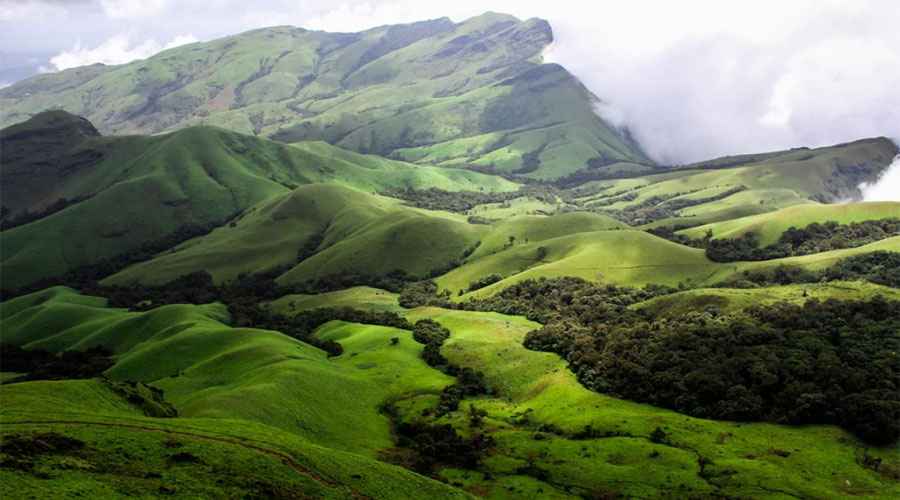The Western Ghats mountain range, stretching along the western edge of peninsular India, is one of the world’s most extraordinary natural wonders. Declared a UNESCO World Heritage Site, this range is recognized globally as a biodiversity hotspot, remarkable for its exceptional species richness and high level of endemism — species found nowhere else on Earth. Spanning over 1,600 kilometers through six states in India, the Western Ghats not only shelter diverse flora and fauna but also play an indispensable ecological role in regulating climate, water cycles, and sustaining human livelihoods.
Geography and Ecological Significance
The Western Ghats run parallel to the Arabian Sea coast, touching Kerala, Tamil Nadu, Karnataka, Goa, Maharashtra, and Gujarat. The mountain range is characterized by undulating hills, steep escarpments, dense tropical evergreen forests, shola forests, montane grasslands, and numerous rivers and waterfalls. Its varied topography and climatic gradients create microhabitats nurturing thousands of species across multiple ecosystems.
Ecologically, the Western Ghats regulate monsoon rainfall, serve as the origin for many peninsular rivers such as the Krishna, Godavari, and Cauvery, and provide critical watershed services supporting agriculture and drinking water needs for millions. The region’s forests are significant carbon sinks, helping mitigate climate change impacts.
Unmatched Biodiversity and Endemism
The biodiversity of the Western Ghats is staggering, with about 7,400 species of flowering plants and an animal diversity that includes approximately 139 mammals, 508 birds, 203 reptiles, 181 amphibians, and 288 freshwater fish species. Among these, a staggering 50 to 65 percent are endemic — found only in these hills. The rich flora includes towering tropical hardwoods, medicinal plants, and rare orchids thriving in shaded forests.
Iconic and Endangered Fauna
Distinctive mammals such as the Nilgiri tahr, a mountain goat endemic to the higher altitudes of the Ghats, and the lion-tailed macaque, an arboreal primate restricted to tropical rainforests, symbolize the region’s unique fauna. Large mammals including elephants, tigers, gaur (Indian bison), and leopards find refuge here, often in protected sanctuaries. Smaller, critically endangered species include the Malabar large-spotted civet and Nilgiri marten.
In the avian realm, the Western Ghats house 508 bird species, with 16 species endemic to the region such as the Nilgiri pipit, Malabar grey hornbill, and broad-tailed grassbird. These birds thrive in the range’s forests and grasslands, playing vital roles in pollination and seed dispersal.
Reptilian diversity includes over 124 endemic species such as shield-tailed snakes and various pit vipers, while amphibians represent one of the highest concentrations of endemic species globally, with over 80% of the 181 frog species being unique to the Western Ghats. Recently discovered species like the purple frog (Nasikabatrachus sahyadrensis) highlight the continuous biological discoveries in the area.
The rich freshwater systems contain 288 species of fish, with 118 endemic ones such as the Denison barb and many ornamental varieties confined to specific rivers like the Chalakudy and Periyar.
Plant Diversity and Unique Ecosystems
The Ghats are a botanical treasure trove with tropical evergreen forests, deciduous forests, and montane ecosystems like the sholas — stunted forests found in valleys surrounded by grasslands. Shola forests are biodiversity hotspots and critical for water retention and climate regulation. The region also supports Myristica swamps, seasonally mass-flowering wildflower meadows, and rich undergrowth layers, contributing to complex habitat structures.
Conservation Challenges and Efforts
Despite its ecological importance, the Western Ghats face threats from deforestation, habitat fragmentation, agricultural expansion, urbanization, and climate change. Illegal logging, mining, and infrastructural developments have led to habitat degradation. The delicate balance of its ecosystems is strained by human encroachment and invasive species.
In response, significant portions of the Western Ghats are protected under national parks, wildlife sanctuaries, and biosphere reserves such as the Nilgiri Biosphere Reserve, which covers over 5,500 square kilometers. These protected areas safeguard habitats, endemic species, and ecosystem services, while government policies and conservation organizations work to promote sustainable land use and community participation in preservation activities.
Cultural Importance
The Western Ghats are not only a natural haven but also a cradle of cultural heritage. The hills are home to various indigenous and tribal communities whose traditional knowledge and lifestyles are intricately linked to the forests and wildlife. Their sustainable practices, rituals, and respect for nature contribute to biodiversity conservation, highlighting the socio-ecological significance of the Ghats.
Tourism and Sustainable Development
The region’s breathtaking landscapes, including waterfalls, wildlife sanctuaries, and hill stations like Munnar, Ooty, and Coorg, make the Western Ghats a favored ecotourism destination. Tourism supports local economies but requires careful management to prevent ecological degradation. Efforts promoting responsible tourism, environmental education, and local community benefits are essential to preserve the Ghats’ legacy for future generations.
Conclusion
The Western Ghats stand as a monumental natural heritage, a reservoir of biological diversity deeply tied to the ecological health of peninsular India. Their unmatched richness in species, endemic treasures, vital ecosystem services, and cultural wealth demands vigilant conservation and sustainable development. Protecting the Western Ghats is not only an environmental responsibility but a commitment to preserving one of the most irreplaceable hotspots on Earth.
This majestic mountain range continues to inspire scientists, conservationists, and nature lovers worldwide, embodying the urgent necessity of harmonizing human progress with nature’s resilience.

